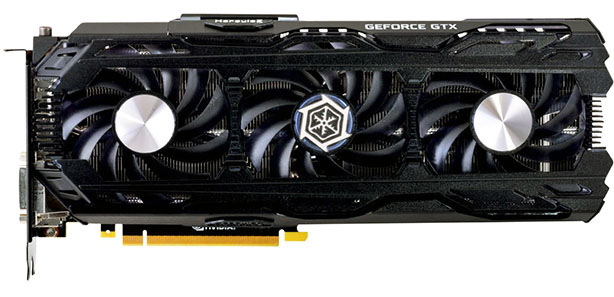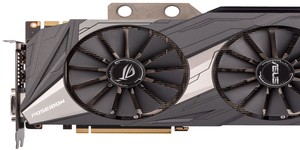
Performance Analysis
GTX 1080 Ti has already established itself as the fastest single-GPU gaming card. Opening up the taps by enabling partners to have their way enables us to have a proper head-to-head comparison against other GTX 1080 cards already on the market.Measured at QHD, the average increase over an EVGA GeForce GTX 1080 FTW is a healthy 34 per cent, reinforcing Nvidia's messaging from the launch event. More relevant to prospective GTX 1080 Ti purchasers, the Inno3D card is able to outdistance the FE model by having a sustained core speed of 1,900MHz. Logs show that it does not throttle.
And keeping such high speeds does not come at the expense of noise. Silent when idle, the card's trio of fans emit a gentle hum until a peak 1,600rpm is reached, at which point the card is audible but quieter than the Founders Edition.
The key to keeping the GTX 1080 Ti ticking over nicely is increasing the available power and then cooling it by strapping a monstrous heatsink on top. The iChill is more industrial than elegant, but it's plenty good enough to keep 3,584 cores at 70°C in the stressful Unigine benchmark. Such heatsinks are overkill for GTX 1080 yet sensible for this true range topper.
Conclusion
GeForce GTX 1080 Ti's performance domination was only truly going to be felt once the GP102 silicon was tamed by heavy duty cooling. Inno3D does that well with the iChill version, and performance scaling is just where we would expect it to be - near the 40 per cent more shaders this GPU packs over the regular GTX 1080.Performance aficionados who jumped on the GTX 1080 bandwagon will be suitably miffed that a comfortably faster GPU has come along so soon. At the time of writing, Inno3D is charging £750 or so for the privilege of owning this model, which is about 10 per cent more than the GTX 1080 variant was just recently. In that context, £750 can be arguably be viewed as value, because this card gets closer than ever to 4K gaming.
Would-be purchasers can choose between electric frame rates at QHD or solid numbers at 4K, and there's enough horsepower on tap to sensibly pair up the iChill with a decent G-Sync display at both resolutions.
In a wider landscape, Nvidia and its partners have just made AMD's Vega job that much harder. Point is, those wanting superlative PC gaming performance right now should only consider the GTX 1080 Ti, and Inno3D makes a very good case for your money.


MSI MPG Velox 100R Chassis Review
October 14 2021 | 15:04









Want to comment? Please log in.